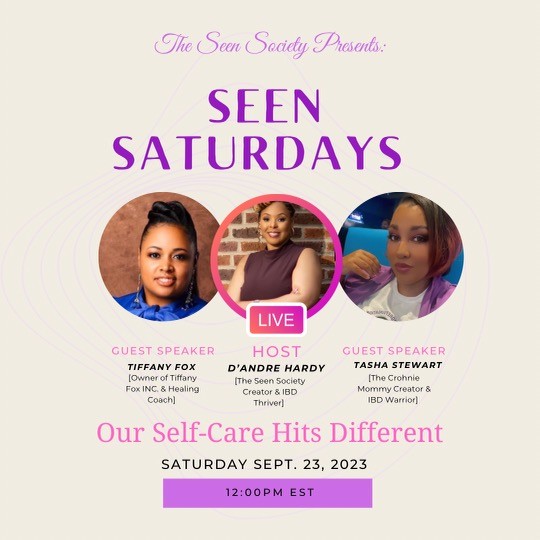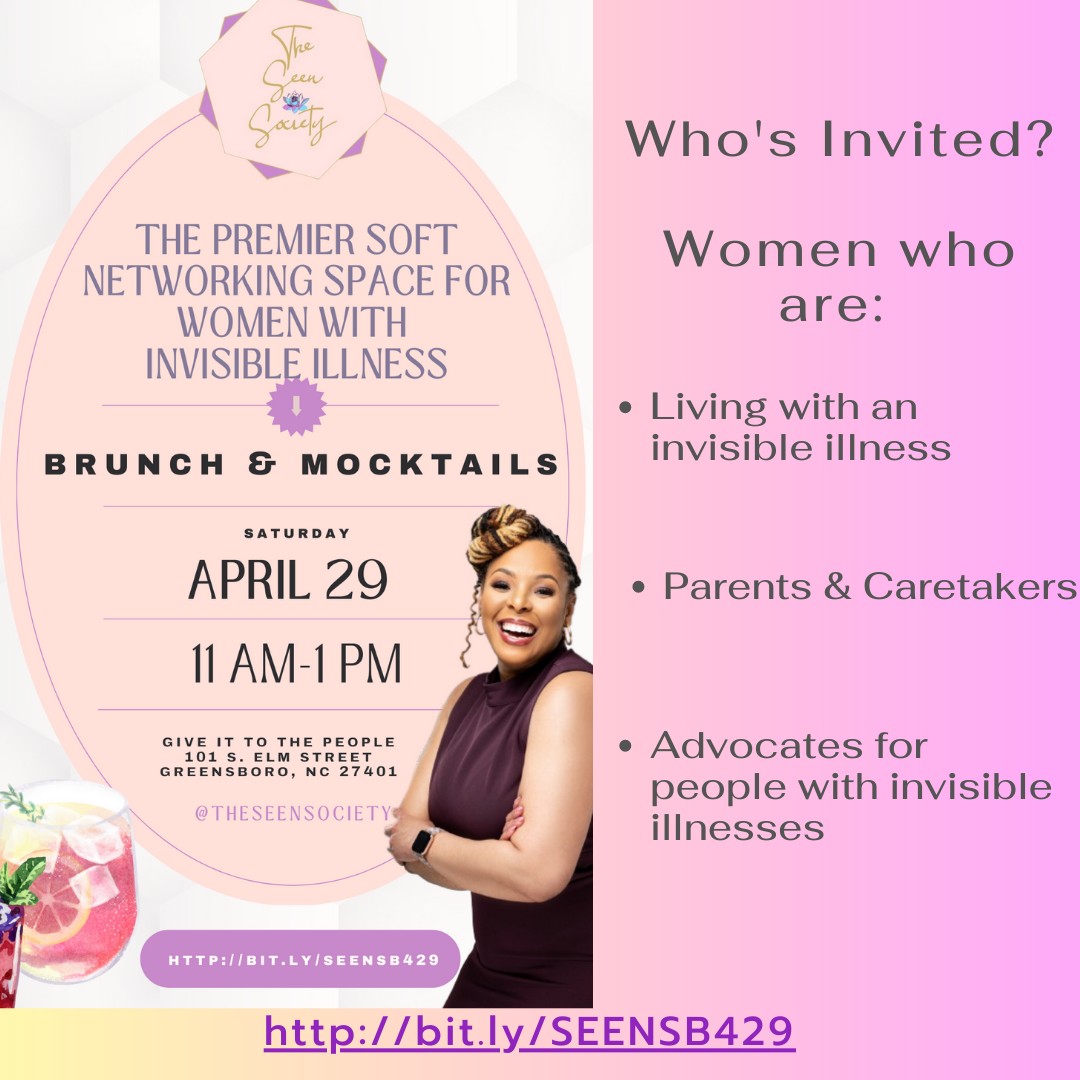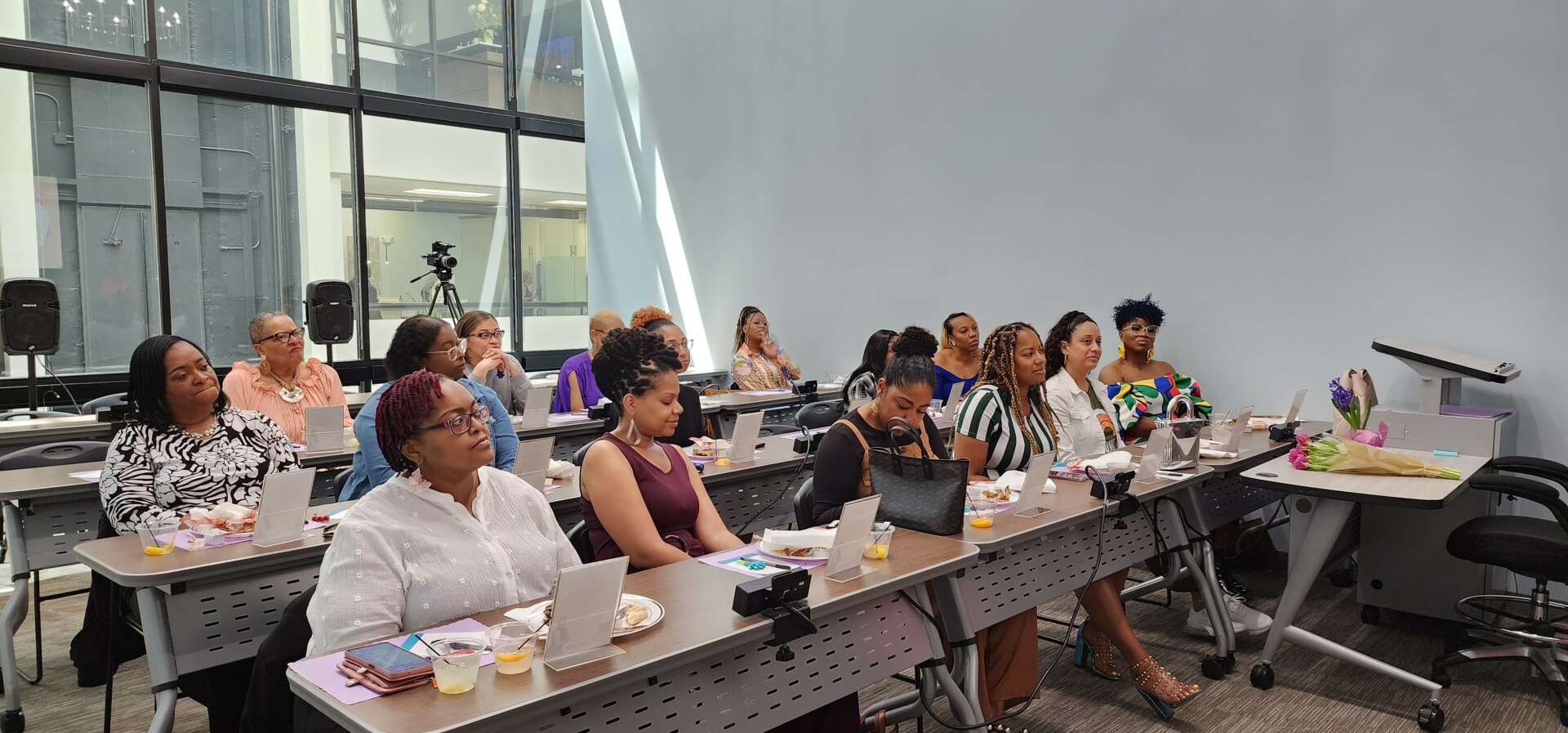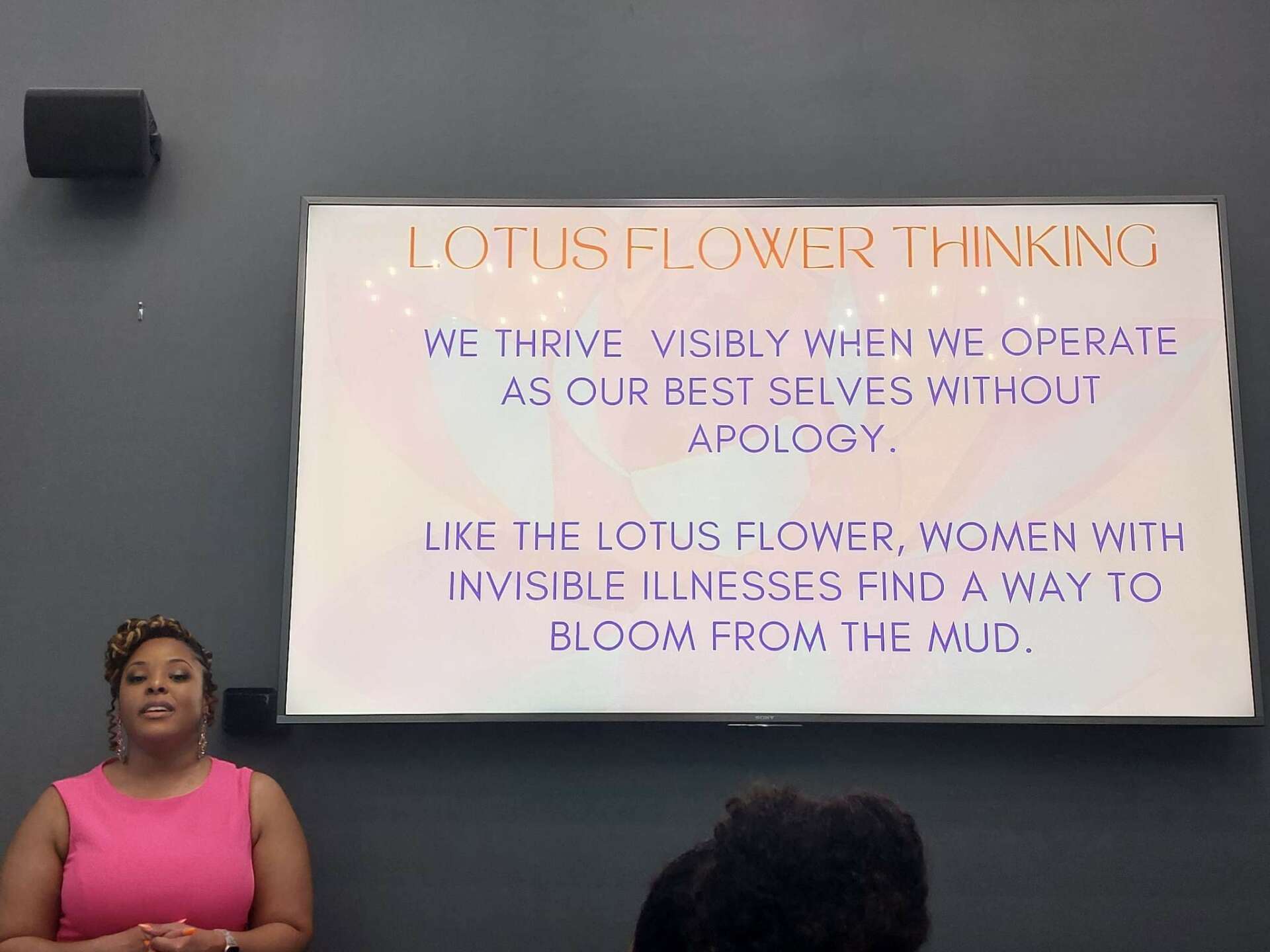We were lucky to catch up with D’andre Hardy recently and have shared our conversation below.
D’andre, thanks for joining us, excited to have you contributing your stories and insights. Do you have any thoughts about how to create a more inclusive workplace?
Whenever I bring up the topic of inclusive practices for invisible/chronic illnesses people often ask me, “why should we discuss chronic illness at work?” As a 23-year chronic and invisible illness survivor, I say, because having a chronic illness affects every layer of identity and if organizations want to attract and retain talent, they must be intentional about building psychological safety for people navigating seen and unseen health challenges. I was diagnosed with Crohn’s & Colitis at the age of 12 – before inclusion was a widely understood best practice. At that time invisible illnesses like Crohn’s Disease were rarely considered for accommodations. Then, I often received the comment “but you don’t look sick”. By the time I started graduate school I thought the only way I was going to be successful in education and my career was to “push through” my pain and sickness so I could be seen as high-performing and dependable. I hid in plain sight. Whenever I started a new job, I rarely told people about my condition until I knew them a while or was forced to because I got sick. Being an ambitious person with an unpredictable chronic illness caused me to second guess my qualifications and abilities when I applied for jobs.
My experiences striving to reach my goals while hiding these challenges often negatively affected how I showed up as a leader. For years I was scared to be my authentic self because I told myself that if my coworkers, supervisors or associates knew about my illness, they would not think I was dependable or see me as a burden. On the outside, I was a “high performer” but internally I second-guessed myself and limited my ideas out of fear to make a mistake while navigating time off for appointments or taking time when I was not well. Everything changed when I had an emergency surgery in 2013, 2 months after starting a new role. I ended up being out on medical leave for 5 months. I had great colleagues and friends that supported me. However, when I returned a leader at the organization made a comment about me potentially “letting everybody down” if I was in a different role that I interviewed for. This moment propelled me into deeper workplace survival mode. I felt like I always had to defend my productivity. As a result, I overcommitted and struggled to delegate. I switched to a new organization but continued to work in survival mode. Inevitably, I burned out. Mentally and physically exhausted, I knew something had to change. I finally accepted that traditional and modern career advice for Black women in the workplace fell short for me. I was chasing a definition of leadership and success that no longer served me and I continually cycled through work environments and roles that lacked either the organizational culture or role attributes that enabled me to leverage my strengths.
From that point on I began to revamp my career strategy by starting with what success looks and feels like for me, then defining the type of organizational culture and role I needed to be successful. The pandemic forced me to reflect on who I was and the lessons I learned over the years. I asked myself who I wanted to be as a person, mom, wife, and leader. I realized the thing I was silent about was actually one of the greatest contributors to who I was. I started sharing what I needed with my team and infusing the leadership lessons I learned from the positive and negative experiences I had. As a result, I had more joy; I did better work and my team members started opening up about their challenges and what they needed. I was then able to shift our team culture to a culture that prioritized doing what we needed to do to take care of ourselves, to be our best selves and do our best work. When I dared to be authentic, I found more women leaders that were working to figure out how to be successful while navigating unfathomable, invisible health challenges.
According to the CDC, 1 in 4 adults in the US have some type of disability, 10% of which are considered considered “invisible” disabilities. The research states the aforementioned percentages are probably higher due to a reluctance of people to self-report (https://www.cdc.gov/ncbddd/
One of the most common misconceptions about inclusive practices for invisible illnesses (and inclusivity in general) is that leaders often think their team members will disclose what is going on with them and they will have a chance to infuse inclusive practices into how they support that person. However, the data above and multiple stories about the lived experiences of people with invisible illnesses states they generally try to mask their challenges in response to negative, non-verbal organizational cultural cues. The truth is, if your high performers are navigating an invisible illness and don’t feel safe, they will leave, and the organization will never really know why.
My primary piece of advice is to lead from a place of inclusion rather than reacting to a need for it. Some practical, tangible ways to be intentionally inclusive that benefit multiple populations, including people with invisible illnesses are:
- Flexible benefits offerings that allow employees to make a benefits “package” that best meets their needs.
- Onboarding, training and ongoing learning opportunities are offered in various modes so the way someone learns or processes information is not a barrier to success.
- Clear performance expectations with consistent, equitable measures of success, mapped to various career paths in the organization.
- Schedule flexibility (with clear expectations) to allow people to do their best work when they are their best selves while maintaining the quality and integrity of the work.
- Equitable and unmonitored access to private restrooms (I should not have to say this, but I’ve heard stories).
- Inclusive food choices or the ability to order from a menu to manage one’s own meals.
If planning a meetings, retreats or work travel:
- Scheduled free time & breaks to allow people time to process information and address other physiological/medical needs without having to make an exit or provide an explanation.
- Clear communication about mandatory and optional activities without retaliation and/or mention of those who
- opt out of optional events.
Ultimately, I want organizations, leaders and individuals to understand that no one is immune from becoming chronically ill. This is a category that crosses race, age, socio-economic status, religion and political affiliations. Life can change quickly for anyone. The narrative that being inclusive and equitable means lowering standards is a lie. Building a culture of inclusivity and equity removes barriers to success and leverages diverse strengths to produce stronger outcomes for everyone.



Awesome – so before we get into the rest of our questions, can you briefly introduce yourself to our readers.
Here’s the general introduction – D’andre Hardy, career coach and inclusive leadership consultant focused on increasing inclusivity and health equity for people living with invisible illnesses. As a speaker, I use my story to examine the negative outcomes of non-inclusive environments and how to build inclusive cultures that increase engagement & belonging to maximize results. As a coach, I partner with entry to senior-level professional women to help them 1. define what success looks like for them. 2. articulate their experience from an asset-based lens and 3. position themselves for roles at organizations that enable them to thrive. When I’m not working on The Seen Society, I enjoy spending time with my husband, daughter, family and friends. I love binge watching new TV series, sports and all things pop culture. I always tell my full story whenever I have the opportunity so people can understand why this is so important to me.
The journey to be fully seen and authentic began 23 years ago, in 2000, when I was 12 years old. I looked in my mother’s eyes as we sat in the doctor’s office hoping to finally learn what was causing me extreme pain while eating that resulted in me losing 50 pounds in two months. I knew my mom was scared but she was somehow holding herself together, holding back her tears while she gripped my hands, rubbed my back and repeated soft prayers as we waited. I knew she was trying to be strong for me. As I sat there and took all this in, thoughts like “am I going to be ok?” and “am I dying?” raced through my head. I went from being a normal, healthy, active 12-year-old to a malnourished, sickly adolescent in a span of 5 months. I was suddenly unable to eat anything without intense pain and I lost 50 pounds in the blink of an eye. The doctor walked in with a grim face. He was stern, but kind. I could tell he was trying to ease the blow since I was so young. He looked at us and said ” D’andre you have Crohn’s colitis, an incurable, inflammatory bowel disease. We can treat the disease and help you have a normal life as much as possible, but you will have this disease for the rest of your life.” He also explained that while some newer medications were available, a lot more research was being done. Life drastically changed after that. The next 15 years consisted of many ups and downs, including 10 surgeries, too many different medications to count, and learning what I needed to do to manage my body while trying to navigate adolescence and young womanhood. High School. Navigating college as a first-generation college student. Graduate School. Early career development. All of these experiences were impacted by having a chronic, invisible illness.
I went on to have progressive leadership positions at large and mid-size public institutions, independent liberal arts institutions, and corporate consulting. These experiences equipped me with a myriad of leadership and coaching experiences from coaching people of all ages through career development and transitions to partnering with leaders to reimaging their organizational structures and processes, I built a strong skill set of breaking strategy down into digestible action items. In response to the lack of discussion about the intersection of chronic illness, leadership and employee engagement, I officially launched in March of 2023.
The Seen Society provides consulting and coaching services to amplify the experiences of women living with invisible illnesses to create capacity for authentic, inclusive leadership.
The Seen Society’s reoccurring programs are:
Career Strategy Course: A 4-week career strategy development program designed to lead participants through:
1. Defining career non-negotiables
2. Evaluating professional networks
Here’s a recent review of the career course – I love clients with big personalities who leave reviews like this!
“I recently completed her (The Seen Society) coaching and consulting class and when I tell you she gathered me in the most assertive, professional & COMFORTING way?! I’m talking like… she was talking and dropping gems and I wanted to know who she was talking about because I wanted to meet this woman! Y’all, the woman was ME! I had been (past tense) playing small so long I was not aware of who I AM; that changed when I worked with D’andre in this capacity. I am IN AWE. There is an increase coming my way in every aspect. I know one of my main opportunities has been a lack of discipline. WHEN I TELL YOU I AM NOW ON TASK AND BEHAVE AS I SHOULD HAVE BEEN! It is real. She is REAL. The things she’s implementing for The Seen Society and the community it’s focused on? Get in line and get in the class because that price will (& SHOULD) go up!”


What’s a lesson you had to unlearn and what’s the backstory?
My first year of business had so many lessons but the main thing I had to unlearn was that every connection or person I added to my network would be an “organic connection”. I use organic connection to mean someone I meet at a conference or through my network. Coming into business I would see other business owners who seemingly, from my perspective, happened to “just know” all these people. This belief caused me to second guess my place as a business owner at times because I wondered how I would ever meet the people I needed to meet. I have an exceptional personal and professional network, but how long would it take me to build a “business network”. At that time I saw them as two different things. I joined a speaking accelerator and my coach talked about the importance of investing to be in the same room with decision-makers and potential clients. Up until that point I knew that networking is a strategic practice but the perspective of networking as an investment to be in the right rooms to meet the right people who can sponsor and pay for services was different. I know this concept may sound obvious to many readers, but to new business owners, especially business owners who may be the first entrepreneur in their family, most of the things we assume “just happen” in business for other people, are really investments. I originally equated my business productivity with doing a number of different tasks. I had to learn to strategically invest time and money into high-leverage relationship building and how to maintain those relationships authentically.
Have you ever had to pivot?
Yes! Pivoting is not something that comes naturally with my personality but the last few years have pushed me in a good way. The Seen Society is in year 2 of business. In my first year, I created a series called Seen Saturdays to talk to women living with an invisible illness or who advocate/work to build inclusivity. I originally envisioned this being a YouTube series but it was hard to scale this as a new business owner. I did not have regular access to a recording studio and all the equipment or the funding to consistently rent out a space to record. I also was and still am building my social media presence. After going back and forth about keeping the series, I pivoted to hosting Instagram Live interviews with my guests to expand the reach of both platforms. I did 3 last year and they were successful. I gained about 70 more followers from 3 “live” events and a 10% increase in my LinkedIn impressions. I have a goal of doing at least 3 LinkedIn lives this year. Like many new entrepreneurs, I have a big vision for the series that I am working toward but I had to learn to give myself permission to pivot and the grace to be a beginner to execute the idea in a different way. I encourage anyone reading this that feels “stuck” trying to execute a vision due to being a newcomer or not having it all figured out, to give themselves permission to pivot.
Contact Info:
- Website: https://www.theseensociety.com/
- Instagram: The Seen Society
- Facebook: The Seen Society
- Linkedin: www.linkedin.com/in/dandreahardy
- Youtube: The Seen Society
- Other: TikTok: The Seen Society
Image Credits
The images of me in the purple dress were all photographed by KaTrena Wize Artograhy (https://www.katrenawizeartography.com/)


